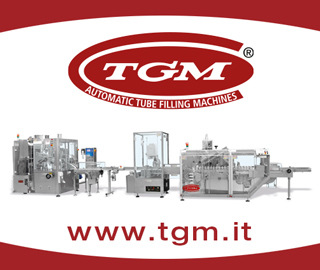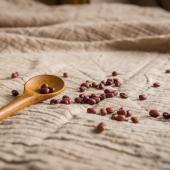Beverages: market and packaging
In this article we analyse alcoholic and non-alcoholic beverages produced in Italy and imported and exported and, finally, those consumed in our country. This last parameter takes into consideration all the beverages distributed through the different sales channels: mass retail, Ho.Re.Ca, online sales, etc.
Barbara Iascone
In 2023, the beverages sector as a whole registered a fall in terms of both quantity and turnover. In the first case, the sector recorded a decrease of 4.5%, in the second the fall exceeded 5%. Alcoholic and sugary drinks registered the worst trends – thanks to greater attention to health on the part of consumers - in line, therefore, with the general contraction in consumption that has affected the entire food sector.
Beverage volumes in Italy
The Italian production of packaged beverages in 2023 reached 26,990 million litres, down compared to 2022 by 3.1%. Imports fell by 5.7% with 1,150 million litres, while exports slightly grew: +0.9% with 5,200 million litres.
Apparent consumption fell by over 4%, but does not take account of the movement of stocks, a very significant factor in this sector, especially with regards to the alcohol segment.
On the basis of initial analyses of the current year’s trend, there should be a general recovery in production, supported mainly by the foreign market rather than by domestic demand, with an increase in production that should be around 2%.
| 2007 | 2019 | 2020 | 2021 | 2022 | 2023 | 23/22 | |
|---|---|---|---|---|---|---|---|
| Production | 22,266 | 25,374 | 24,334 | 25,676 | 27,866 | 26,995 | -3.10% |
| Import | 1,283 | 1,109 | 1,027 | 1,268 | 1,229 | 1,159 | -5.70% |
| Export | 3,017 | 5,174 | 4,398 | 4,798 | 5,170 | 5,210 | 0.80% |
| Consumption | 20,532 | 21,309 | 20,963 | 22,146 | 23,925 | 22,944 | -4.10% |
Alcoholic drinks. Wines, sparkling wines, beer, spirits and aperitifs come under this category and represent 23% of the sector. These are the beverages that recorded the largest fall in 2023, with a production that dropped by 6.5%. With regards to foreign trade, both directions show negative trends: -9.6% for imports and a more limited -1.9% for exports. In the context of alcoholic drinks, wines and sparkling wines account for the lion’s share, together covering 60% of the segment and registering a production fall of 10% The outlook for 2024 is positive, given that the segment should grow by 1.5%.
| 2007 | 2019 | 2020 | 2021 | 2022 | 2023 | 23/22 | |
|---|---|---|---|---|---|---|---|
| Production | 17,204 | 18,795 | 18,270 | 19,401 | 21,272 | 20,850 | -2.00% |
| Import | 474 | 197 | 204 | 256 | 201 | 230 | 14.00% |
| Export | 1,400 | 2,366 | 2,020 | 2,156 | 2,513 | 2,603 | 3.60% |
| Consumption | 16,278 | 16,625 | 16,454 | 17,995 | 18,109 | 17,995 | -0.60% |
Non-alcoholic beverages. This area represents 77% of the beverages market, having a big impact on the performance of the sector as a whole. In 2023, production registered a fall of -2% with 20,800 million litres produced, stemming the losses of the macro-sector. Exports (+3,6%) boosted production; imports were also up, albeit with low values.
On the basis of an analysis of volumes produced, the most representative beverage of the segment remains mineral water, which accounts for around 79%. In 2023, mineral water recorded a -1,2%, a decidedly lower drop than that of the other non-alcoholic sectors. The outlook for 2024 for non-alcoholic beverages are positive, with a forecast closure of +3%.
| 2007 | 2019 | 2020 | 2021 | 2022 | 2023 | 23/22 | |
|---|---|---|---|---|---|---|---|
| Production | 5,062 | 6,579 | 6,064 | 6,275 | 6,594 | 6,146 | -6.80% |
| Import | 809 | 912 | 822 | 1,012 | 1,028 | 929 | -9.60% |
| Export | 1,617 | 2,808 | 2,378 | 2,643 | 2,657 | 2,607 | -1.90% |
| Consumption | 4,254 | 4,684 | 4,508 | 4,644 | 4,451 | 4,468 | 0.40% |
Packaging numbers
In 2023 around 5,500,000 tonnes of primary packaging were used in the beverage sector. In the segment as a whole, a net prevalence of the use of plastic packaging emerges, linked to the non-alcoholic beverages area, which is much more representative than the alcoholic drinks sector. Plastic containers represent 60.1% of packaging used, up compared to 2022. The rest of the packaging mix is subdivided between 30.0% for glass packaging and the remaining 9.9% subdivided between cans, cartons, cheer packs, glasses and draught drink dispensers.
- With regards to alcoholic drinks, the glass bottle continues to be the most used packaging with a market share of 79.2%. The “other” heading follows with 12.1%, inside of which there are drums, demijohns and draught drink dispensers.
- Mainly paper-based laminated containers represent 5.7% of the packaging mix, while metal cans register a market share of 3.1%. Plastic bottles represent 0.8%.
- The plastic bottle remains predominant in the non-alcoholic beverages segment, in which mineral water is confirmed as the main user sector. In 2023, the plastic bottle has a market share of 78.1% and glass 15.1%. With decidedly smaller shares, the mainly paper-based laminated containers follow with 3%, cans with 1.8% and the “other” heading, including cheer packs, drums and draught dispenses, with 2%.
| 2022 | 2023 | |
|---|---|---|
| Glass bottles | 30.30% | 30.00% |
| Mainly paper-based laminated packaging | 3.70% | 3.40% |
| PET bottles | 59.20% | 60.10% |
| Metal tins | 2.20% | 2.20% |
| Other (1) | 4.60% | 4.30% |
| Total | 100.00% | 100.00% |
(1)Cheerpacks, shot glasses, dispensers
In conclusion
In a general analysis of materials, the packaging mix of the beverages sector could appear to be a rather stable market area. No great shifts for the different materials from one year to another emerge comparing annual market shares of each type of packaging, but what is seen if the comparison covers a wider period? The picture is certainly different.
| 2022 | 2023 | |
|---|---|---|
| Glass bottles | 15.00% | 15.10% |
| Mainly paper-based laminated packaging | 3.10% | 3.00% |
| PET bottles | 78.00% | 78.10% |
| Metal tins | 1.90% | 1.80% |
| Other (1) | 2.00% | 2.00% |
| Total | 100.00% | 100.00% |
(1)Cheerpacks, shot glasses, dispensers
Over twenty years we see that, although all the types of packaging have grown thanks to the positive evolution of the sector, plastic packaging has grown more with respect to the others (+2% annual average), to the detriment mainly of glass bottles, which recorded an annual average growth of +1%. These two trends are, however, closely linked to the evolution of the use sectors. In the same period, for example, mineral water recorded an annual growth of +2.2%, justifying the greater use of plastic bottles.
A similar argument can be applied to the use of glass bottles, given that, in twenty years the spirits sector recorded an annual average growth of +1.2%.
| 2022 | 2023 | |
|---|---|---|
| Glass bottles | 78.30% | 79.20% |
| Mainly paper-based laminated packaging | 5.40% | 4.70% |
| PET bottles | 0.80% | 0.80% |
| Metal tins | 3.00% | 3.10% |
| Other (1) | 12.50% | 12.10% |
| Total | 100.00% | 100.00% |
(1)Cheerpacks, shot glasses, dispensers
What is also interesting is the figure relating to the “other” heading, which has grown annually on average by +1.5%: in this case, the elements of greatest impact have been, on the one hand, the increasing use of cheerpacks and, on the other hand, the significant spread of soft drink dispensers in Ho.Re.Ca.
| 2023 | |
|---|---|
| Glass bottles | 2% |
| Mainly paper-based laminated packaging | 0.50% |
| PET bottles | 1.00% |
| Metal tins | 0.90% |
| Other (1) | 1.50% |
| Total | 100.00% |
(1)Cheerpacks, shot glasses, dispensers
Barbara Iascone
Italian Packaging Institute



















